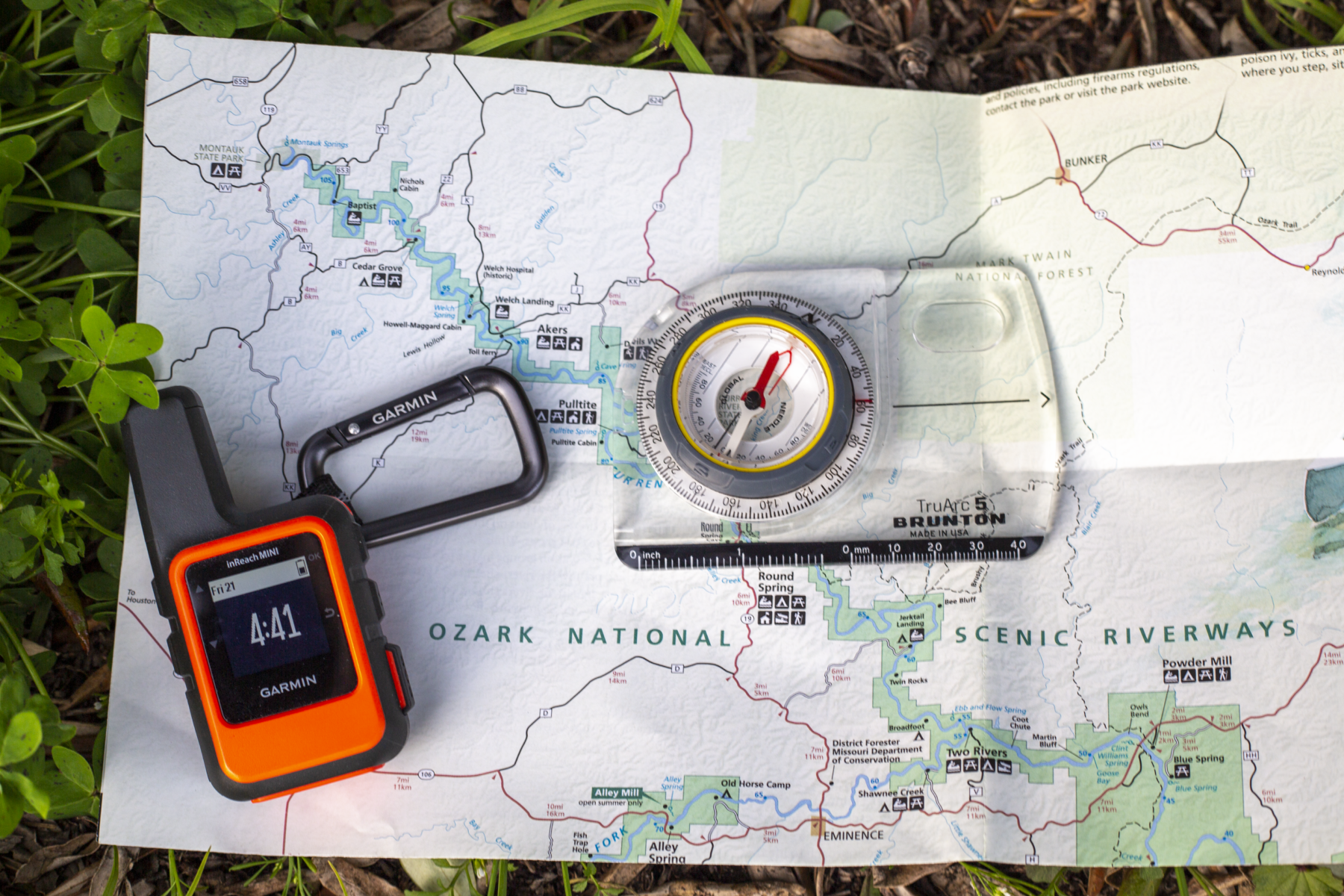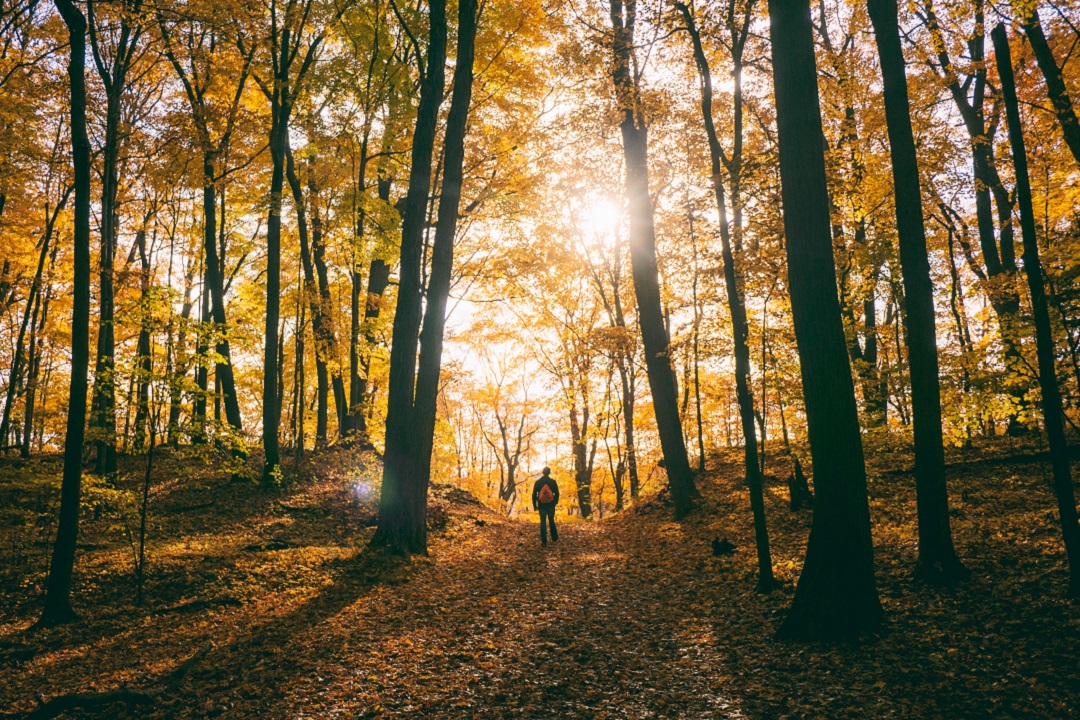Navigating the wilderness has never been easier thanks to apps like Gaia GPS, Avenza, and AllTrails and GPS devices made by Garmin, Suunto, and others. But as good as these modern marvels are, they can lead to a false sense of security. All electronic devices, whether a smart watch or cell phone, are useless if they bonk. And trust me, even on a day trip with a fully charged battery, it can happen.
Part of your preparation for any hike should include thinking about what you will do if you don’t have access to electronics, so you have the best chance of survival. This includes always bringing the 10 essentials and filing a trip plan for security (see our “Paddling” column here).
But what happens if you DO find yourself off the grid and don’t know where you are?
S.T.O.P.
If you do become lost, your most important tool is keeping a positive mental attitude. The US Forest Service reminds you to do this with the acronym S.T.O.P.
Stop: As soon as you realize you may be lost, you should stop, stay calm, and stay put. Panic is your greatest enemy.
Think: Consider how you got to where you are. What landmarks should you be able to see? Do not move until you have a specific reason to take a step.
Observe: Get out your compass and determine the directions based on where you’re standing. Do not walk aimlessly.
Plan: Based on your thinking and observations, come up with some possible plans, think them through, then act on one of them.
Should I Stay or Go?
Unless you’re very confident in the direction of civilization and have a reliable plan to get there, experts believe you’re better off staying put. In fact, smokymountains.com analyzed 100+ news reports of lost and rescued hikers in national parks over the last 25 years and found that of the lost hikers who made it back alive, 77 percent were rescued.
You should only attempt a “self-rescue” in the event you did not tell anyone of your whereabouts and have no way to signal others — such as a charged cell phone with service, a rescue whistle (three short blasts), or a signal mirror.

Always stop and check your position if you feel you are lost. (Morgan Paar)
If you decide you must try to make it out on your own, stay on a trail. Most trails are marked with signs (where intersections meet) and with diamond blazers or markers. These may help you find yourself on a map. As a very last resort, follow a drainage ditch or stream downhill. This is often a difficult path but could lead to a trail or road.
If it’s nightfall, you’re injured, or you’re near exhaustion, stay put.
Safety Considerations
Dehydration: Humans can last three or more days without water in most situations. If you decide to drink from a creek or stream, purify the water with a filtration system or tablets, or boil it for at least 10 minutes. If you can’t do any of these things to purify your water, just drink it unfiltered. Statistically, in the US, you’ll be rescued within 24 hours, so death from dehydration is a bigger risk than contamination.
Hypothermia: Hypothermia is a lowering of the body’s core temperature caused by over-exposure to cold air or water. Keep an eye on weather forecasts and remember that layering is the name of the game when it comes to regulating your body temperature. I used to scoff at expensive hiking and camping clothes, until I tried them. Now, I don’t enter the forest without a Merino wool base layer, beanie hat, and Gore-Tex pants, jacket, and mitten shells.
Heat Exhaustion: If you’re hiking in exposed and hot areas, don’t hike in the hottest part of the day. Hike in the early morning or evening, and if you have a strong enough headlamp, you can night hike. Many experts recommend a gallon of water (4.55 liters) per hiker per day, but this is a rough rule of thumb, not exact science. Your body needs fuel to absorb water, so foods high in protein such as nuts, dried fruit, protein bars, and jerky are a good idea. Finally, avoid sun exposure by covering all of your body — including your arms, legs, and neck — and applying sunscreen and wearing a wide-brimmed hat.
Hunger: Experts agree that the body can go up to 40 days without food and survive. Obviously, this is not healthy, as your body will eventually begin to consume muscle once your fatty tissue is depleted. According to the British Medical Journal, severe side effects of starvation occur after losing 10 percent of body weight and “very serious conditions” will occur when a person loses 18 percent of their weight. Lost hikers have survived by eating all types of flowers (such as dandelion and clover) as well as seaweed, insects (avoid spiders and millipedes), slugs, snails, and worms. Stay away from mushrooms and creatures and plants with bright colors.
To the Rescue
If you hear a rescue helicopter, ATV, or search party, movement and contrast are your best bets for being found. Move to a bald area away from trees and, if you don’t have a whistle or signal mirror, wave bright-colored clothes or gear and make nose. If you have a campfire burning, add green vegetation to the fire to create smoke.
Most importantly, the best way to survive being lost while hiking is to be prepared to be lost. Study maps before you go, tell two people where you’ll be and when you plan to return, and make sure you bring the 10 essentials, even if going out on a half-day hike.
Personal Locator Beacons
Personal locator beacons aren’t cheap, and you usually need a monthly or yearly subscription to properly use them, but they can be a life-saver. Not only will they allow you to know where you are and send your location to people back home, but many have an SOS button that works with satellites if you’re really in trouble. Don’t use this SOS option lightly, though, as the rescue can be pricy.
Author: Morgan Paar is a regular contributor to Terrain Magazine.


Leave A Comment